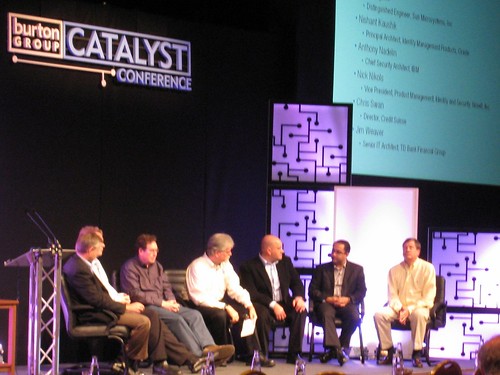Change We Need
It’s been a long time since I have been able to post. A lot conspired to make it difficult for me to keep up with my blogging, not the least of which has been a number of interesting, but under wrap, developments within the IdM group at Oracle (if you follow me on Twitter, you may know what I am talking about). I‘ve been knee-deep in meetings planning our development projects for next year, so stay tuned to this space for a look ahead.
My last post was just before I headed to Prague to participate in a panel on Identity Services at Burton’s Catalyst Europe conference. I could make some jokes about how it has taken me this long to recover from the craziness in Prague, and it would be partly true. Prague is actually quite a crazy party destination, and I saw quite a few party groups from the UK out on their ‘stag do’ navigating their way through the Prague nightlife. And while I can’t tell you too much about the history, there are few nightclubs you should visit in Prague, especially if you’re out on your stag party. But I wouldn’t even begin to know how to describe all of it, so this is me moving swiftly on.

During the panel discussion (thanks to Oracle’s own Dennis MacNeil for taking the photograph above), we talked about the work we’ve been doing in Burton’s Identity Services Working Group (ISWG). Kevin preceded the panel with a presentation outlining the results of the first phase of our work, which has focused on the basic services in an identity services architecture – attributes, authentication and authorization. I can’t really share the results of the work here, because of the rules we work under as part of the working group (I’ll try and talk Kevin into letting me share some of it). However, I will say that one of the interesting developments from the many meetings we had, and which informed the approach taken in this phase of the project, was the group adopting the thought that “Authentication is simply an Obligation in an Authorization process” (think about it). As a result, we have come up with an interesting take on the role of PEPs, PDPs and Claims in the architecture.
The bulk of the panel discussion focused on explaining the drivers for the work being done in the ISWG. The fact that all the folks on the panel were either vendors or financial industry folks meant that the talk was about creating efficiencies, standardizing deployment architectures, maintenance and upgrade headaches and freedom from vendor lock-in. All good reasons to keep in mind when understanding how identity services needs to evolve and get used.
But one of the things that didn’t come up was the fact that our industry as a whole is headed towards a seismic shift in how we deal with identity, and that having a good identity services story is crucial to being able to weather the storm. Change is definitely in the air, and not just because the recent election cycle or recession fears have put that word firmly in our conscious. You can sense this by doing a quick scan of the blogosphere. Rapid advancements in the area of Information Cards and OpenID, Microsoft’s recent work encapsulated in the Geneva announcement, our own work on the IDx project and the emerging talk of the “Open Stack” for identity are all key developments to follow to understand where we are headed as an industry. There is a lot of work still to be done in these initiatives, but one can already see the far-ranging implications of all these projects. And identity services will be the backbone that allows enterprises and applications to adapt in a scalable manner.
Much needed change is on the way, so buckle up.
he fact that all the folks on the panel were either vendors or financial industry folks meant that the talk was about creating efficiencies, standardizing deployment architectures, maintenance and upgrade headaches and freedom from vendor lock-in.